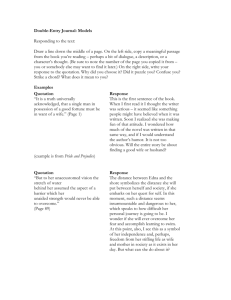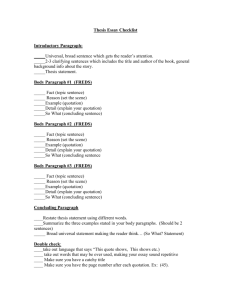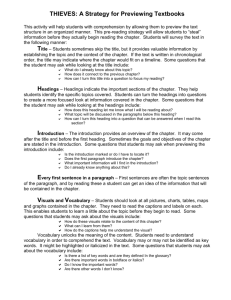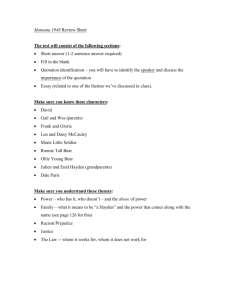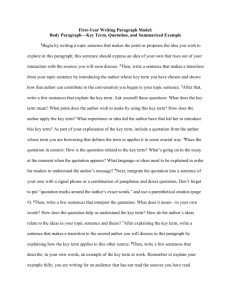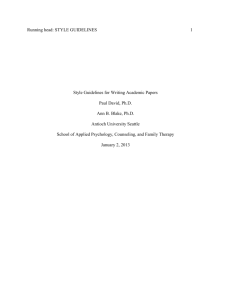Formatting your assignment
advertisement
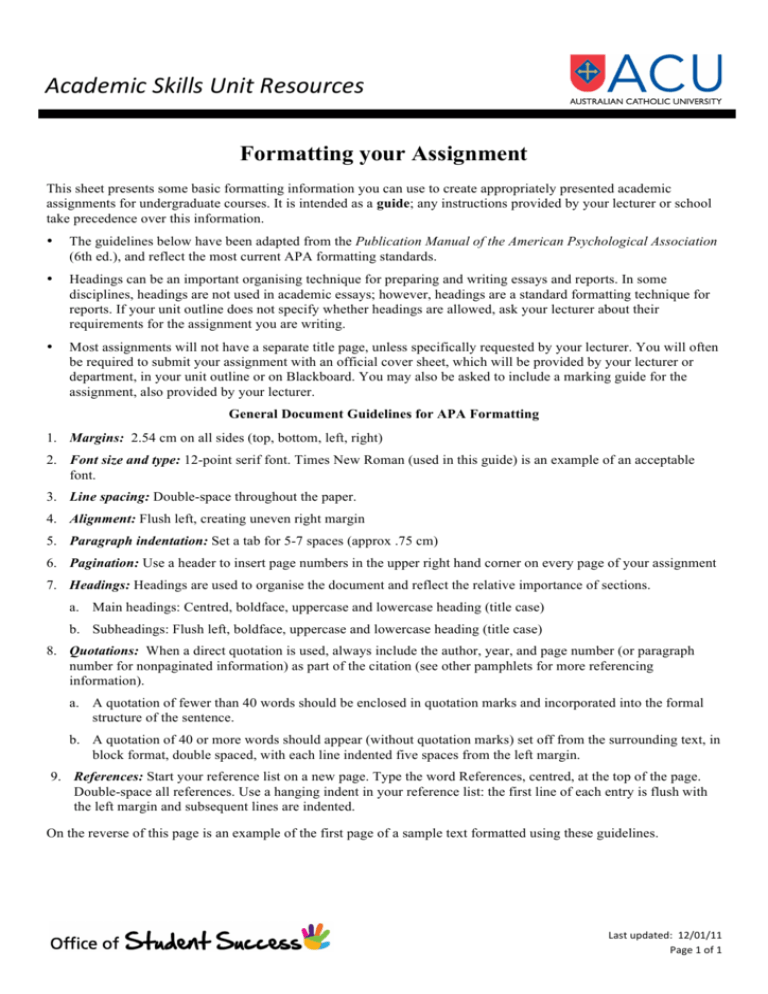
Academic Skills Unit Resources Formatting your Assignment This sheet presents some basic formatting information you can use to create appropriately presented academic assignments for undergraduate courses. It is intended as a guide; any instructions provided by your lecturer or school take precedence over this information. • The guidelines below have been adapted from the Publication Manual of the American Psychological Association (6th ed.), and reflect the most current APA formatting standards. • Headings can be an important organising technique for preparing and writing essays and reports. In some disciplines, headings are not used in academic essays; however, headings are a standard formatting technique for reports. If your unit outline does not specify whether headings are allowed, ask your lecturer about their requirements for the assignment you are writing. • Most assignments will not have a separate title page, unless specifically requested by your lecturer. You will often be required to submit your assignment with an official cover sheet, which will be provided by your lecturer or department, in your unit outline or on Blackboard. You may also be asked to include a marking guide for the assignment, also provided by your lecturer. General Document Guidelines for APA Formatting 1. Margins: 2.54 cm on all sides (top, bottom, left, right) 2. Font size and type: 12-point serif font. Times New Roman (used in this guide) is an example of an acceptable font. 3. Line spacing: Double-space throughout the paper. 4. Alignment: Flush left, creating uneven right margin 5. Paragraph indentation: Set a tab for 5-7 spaces (approx .75 cm) 6. Pagination: Use a header to insert page numbers in the upper right hand corner on every page of your assignment 7. Headings: Headings are used to organise the document and reflect the relative importance of sections. a. Main headings: Centred, boldface, uppercase and lowercase heading (title case) b. Subheadings: Flush left, boldface, uppercase and lowercase heading (title case) 8. Quotations: When a direct quotation is used, always include the author, year, and page number (or paragraph number for nonpaginated information) as part of the citation (see other pamphlets for more referencing information). a. A quotation of fewer than 40 words should be enclosed in quotation marks and incorporated into the formal structure of the sentence. b. A quotation of 40 or more words should appear (without quotation marks) set off from the surrounding text, in block format, double spaced, with each line indented five spaces from the left margin. 9. References: Start your reference list on a new page. Type the word References, centred, at the top of the page. Double-space all references. Use a hanging indent in your reference list: the first line of each entry is flush with the left margin and subsequent lines are indented. On the reverse of this page is an example of the first page of a sample text formatted using these guidelines. Last updated: 12/01/11 Page 1 of 1 1 This Is a Main Heading This is the first sentence of the first sample paragraph. In APA style, the first line of any paragraph is indented 5-7 spaces from the left margin (approximately .75 cm), and the right margin is not justified. All paragraphs are double-spaced. You may see paragraphs formatted differently; the key is to be consistent in your spacing and formatting. Providing page numbers in your document is a good idea. In this example, the page number is placed in the upper right-hand corner; alternatively, you may be asked to place it at the bottom of the page. You may also be asked to include your name and student ID number with the page number. Always check with your lecturer about their specific formatting requirements. This Is a Subheading This is the first sentence of the second sample paragraph. It follows a subheading. There is no extra space before or after either the heading or the subheading. “This is a short quotation of less than 40 words and should be incorporated into the text, with a correctly formatted in-text citation that includes the author’s surname, a date, and a page number” (Smith, 2009, p. 10). The quotation is set off by double quotation marks. The full stop follows the final bracket, including the citation in the sentence. The next quote is longer, so it looks different: This is a longer quotation of more than 40 words. It is not incorporated in the text, but is set aside in a double-spaced block that is indented 5-7 spaces from the left margin. There are no quotation marks. The citation follows the final full-stop. (Jones, 2005, p. 30) This is the first sentence following the block quotation. It is part of the previous paragraph, so the first line is not indented. This sentence includes an in-text citation for a paraphrase (Axelrod, 2007). As Thornton (2008) suggests, if you include the author’s name in the text of the sentence, you do not need to include it in the brackets. This is the last sentence.


